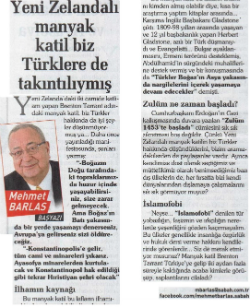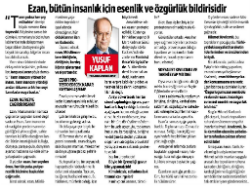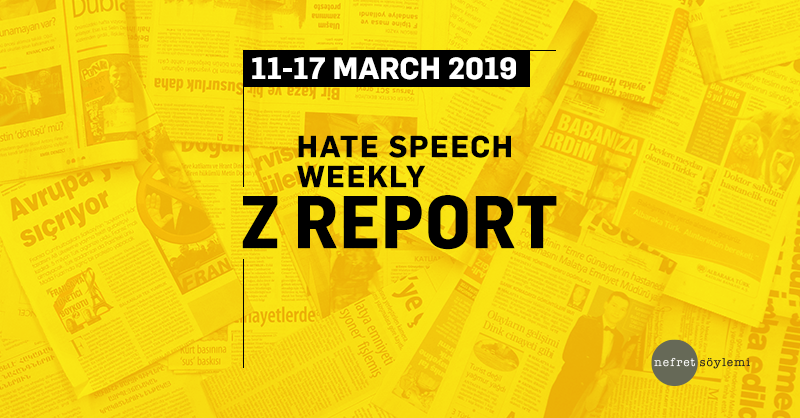Within March 11-17, 2019 three articles that generate hate speech were selected from print media. You can find these articles that contain hate speech against Armenians, New Zealanders, Christians and non-Muslims as well as the analyses written about them below.1
1.
Mehmet Barlas, in his column titled “The murderer’s obsession”, writes about the terrorist attack in New Zealand. He associates New Zealanders with violence by emphasizing the attacker’s national identity as we see in the following sentences: “It turns out that New Zealander psycho killer is obsessed with Turks” and “Because some people among us agrees with what this New Zealander psycho killer thinks about Turks”. Moreover, he also writes about a person from whom he states that the killer was inspired: “Herbert Gladstone, who lived between 1809-98 and served as prime minister for 12 years, was a vicious enemy of Turks and also an Evangelist. He supported Bulgarian revolt and Armenian terrorism, aided exiled opponents of Abdul Hamid and said in a speech ‘Turks will continue their lives by smoking their water pipes on the Asian side of the Bosporus”. With these remarks, he associates Armenians with terrorism, fomenting the perception of enmity against this identity. |
2.
The article published in İstiklal with the title “Christian terrorist carried out a massacre in the mosque” reports the terrorist attack in New Zealand. In the title and various parts of the article, the attackers are referred as “Christian terrorist”, associating Christian identity with violence and massacre. With the emphasis that the murderer targeted Muslims, a sentiment of enmity between Muslim and Christian identities is formed. Moreover, in the subsection titled “Inspired by the Norwegian killer”, Norwegian identity is associated with violence with a reference to an attack carried out in Norway. |
3.
Yusuf Kaplan, in his column titled “The azan is a declaration of wellbeing and freedom for all humanity”, writes about the claim that azan is protested during March 8 Feminist Night March. He writes: “An insolent incident happened during Feminist Night March in İstiklal Street, azan was protested collectively. These creatures don’t care about women’s rights. They don’t care about violence and rapes to which women are subjected. During this provocative march, where all kinds of sexual perversions that will destroy families were promoted with banners, where discourses that humiliate women and turn women and men into a subhuman species that is slave to their perverted sexual desires abound, where shameful slogans targeting peace, fraternity, unity and wellbeing of society were shouted, azan was protested and booed. This is disgusting! Even the giaour wouldn’t do such a terrible thing!” As we see, he uses the word giaour, which is used as an expression of insult and hatred against non-Muslims in Turkey and reinforces stereotypical negative opinions about non-Muslims. |
1. Within the scope of the media monitoring work focusing on hate speech, all national newspapers and around 500 local newspapers are monitored based on pre-determined keywords (e.g. Traitor, apostate, refugee, Christian, Jewish, separatist, etc.) via the media monitoring center. While the main focus has been hate speech on the basis of national, ethnic and religious identities; sexist and homophobic discourses are also examined as part of the monitoring work.

